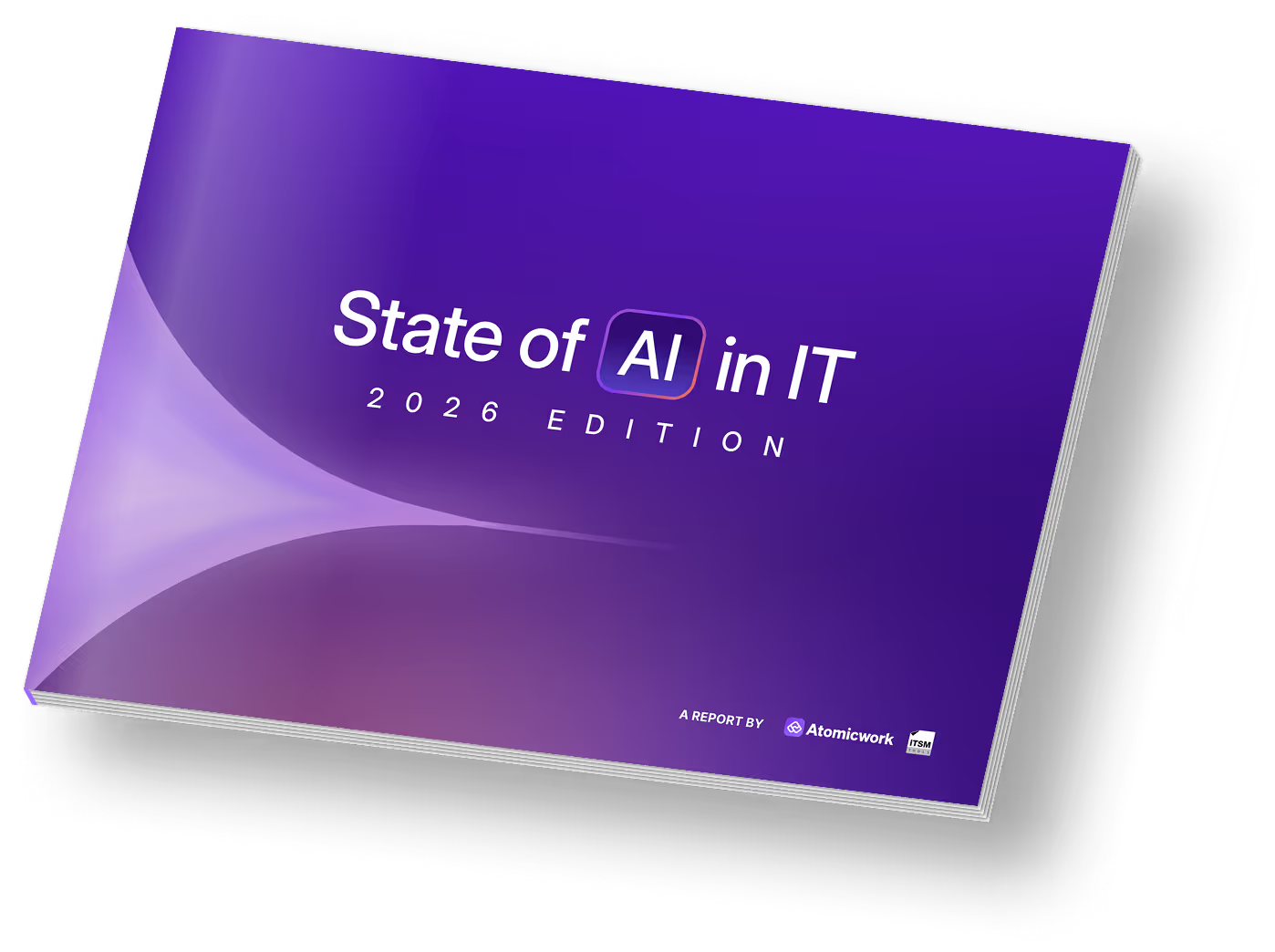The Ultimate Guide to IT Change Management in 2025
Whether you’re shifting to a new office space, deploying a fix to the production server or replacing your organization’s ERP, all these changes, big and small, require a process to be followed, which the IT department owns in most organizations. From day-to-day to high-impact major changes, all these fall under change management and require a systemized approach to prevent chaos and ensure success.
According to a study from Panorama Consulting Group, executives who invest in a change management methodology are 33% more likely to achieve “good” or “excellent” outcomes from their transition than those who don’t, making IT change management a backbone of the organization’s digital transformation.
Why is IT change management important?
The overall objectives of IT changement process include:
- Minimizing risk and disruption
- Retention of current working state
- Reduction in the number of incidents due to change
CIO.com’s Martha Heller explains that IT change management could also indicate “ensuring that new technology and processes are adopted smoothly and effectively.”
IT consultant and Author Peter High emphasizes the alignment to business objectives in his definition of IT change management in his book Implementing World Class IT Strategy: How IT Can Drive Organizational Innovation.
IT change management is the systematic approach to transitioning from the old to the new in IT systems and processes, ensuring alignment with business objectives. - Peter High, IT consultant and Author
Based on the diverse definitions mentioned above, IT change management is a combination of the following:
- It is a structured process of request, review, and approval
- It is aimed at digital transformation with minimal disruption and finally
- It must be aligned with overall business objectives
Change management is an enablement function rather than a series of controls. - Josh Jebathilak, Founder of Fruition
This guide will discuss these key aspects and how AI has impacted IT change management. We will also look at examples and tools that can help you nail different types of IT changes within your organization.
AI’s impact on IT change management
Artificial and machine learning has impacted all spheres of our professional and personal lives. In a survey by Prosci, 30% of the participants said that AI in change management had led to increased productivity.

Source:
When it comes to change management in IT, AI has helped to:
- Simplify and add operational efficiency like managing vast data sets, confidential feedback, adjusting change schedules and approvals, tracking and performance metrics, etc
- Enhance communication by keeping everybody in the loop, recording change requests, etc
- Generate early warnings through predictive analytics so teams can anticipate issues and prepare for obstacles early in the change management process
- Smarter decision-making that is backed by insights from large data sets and points the change manager in the right direction
- Streamline administrative tasks so that IT leaders can focus on other aspects of change management like strategy and adoption
Types of changes in IT
Most changes can be divided into three categories, based on their importance and the processes associated with them.
These are Normal, Standard and Emergency changes.
Based on the type of change, the change management process outlined above, undergoes slight modifications in terms of approvals, stakeholder involvement etc.
IT change management roles and designations
Effective IT change management requires a well-defined organizational structure with clear roles and responsibilities. Here are the key designations that form the backbone of successful change management:
Core leadership roles
Change sponsor (Executive Level)
- Provides strategic direction and executive support
- Secures necessary resources and budget
- Champions the change initiative at the highest level
- Ensures alignment with organizational objectives
Change manager/coordinator
- Oversees end-to-end change management processes
- Chairs Change Advisory Board (CAB) meetings
- Prioritizes and assesses change requests
- Develops and maintains change management documentation
- Monitors implementation progress and success metrics
Change Advisory Board (CAB)
- Review and evaluate proposed changes
- Assesses risks and impact
- Provides recommendations and approvals
- Includes representatives from various departments
Supporting roles
Change agents
- Act as champions at the department level
- Provide feedback from their teams
- Support implementation at the ground level
- Help identify and address potential roadblocks
Business stakeholders
- Contribute domain expertise
- Participate in decision-making
- Communicate business requirements
- Support implementation within their areas
Technical roles
- Engineers/Developers: Implement technical changes
- Service Desk Agents: Provide front-line support
- Information Security Officers: Ensure security compliance
- Network Engineers: Manage infrastructure changes
Additional specialized roles
Operations managers
- Assess operational impact
- Manage day-to-day implementation
- Monitor system stability during changes
Customer relationship managers
- Represent customer interests
- Manage stakeholder communications
- Provide feedback on user impact
The IT change management process
As established, a structured process is key to IT change management. Having a process enables a systematic approach to the change, resulting in successful deployment; it also ensures everything is tracked for future reference and that there are no loopholes.
Let us look at the step-by-step process of IT change management along with key roles.
Challenges in IT change management
Challenge #1: Resistance to change
According to a report, 70% of changes fail due to resistance from employees. There is a reason that the very first step in the IT change management process asks the change requester to share the reason for the change - because to combat the aversion to change among stakeholders, we must ‘start with why’.
Challenge #2: Inefficient processes or poor project management
Did you know that 32% of organizational change failures are due to poor project management skills. A detailed, documented process is at the heart of the success of executing a change. Atomicwork allows organizations to project manage like a pro through automation and templatization based on types of changes. Additionally, it allows you to track the entire lifecycle of the change at a glance.
Challenge #3: Communication gaps
20% of organizational change failures are due to a lack of effective communication. A common adage says, “communicate, communicate, communicate”, and often that doesn’t start and end with a simple RFC proposal. To get all stakeholders to buy-in and adopt to new changes - depending on the scale of the change - the change management team must find ways to over-communicate and clarify all doubts through a consistent effort. With Atomicwork you can centralize the communication, automate and customize it based on the stakeholder it needs to be delivered to.
Challenge #4: Lack of alignment with business goals
Depending on the scope of the change, it is imperative that the business team is aligned with the change objective and truly believes in its potential to positively impact the business. Adoption is hampered when the business goals are not mapped to the technology goal. Atomicwork helps you collect information from the CABs and enables the early standardization of risk assessment to avoid any later hiccups.
Challenge #5: Lack on insight on adoption
One must be aware of where the loopholes lie to counter a lack of adoption. An easy way to track change implementation helps optimize the overall change management process and take corrective measures to ensure faster and smoother adoption. With Atomicwork, you are constantly in the loop as you can view reports and monitor change implementation from within the dashboard.
How modern ITSM software can ease change management
Having the right tool in place for IT change management can help address the above challenges.
With an ITSM software that has built-in change management capabilities, you can:
1. Create customizable change templates easily
Create customized templates and workflows, based on the type of change and your individual company playbook for each. For instance, at your enterprise you might have a more detailed post-implementation review for emergency changes. IT change management software come with simple template creators, that can help you set these up in minutes.

2. Configure change approval policies
Configure change approval policies for different types of changes: Normal, Standard or Emergency. You can preselect the reviewers and approvers with each template to enhance transparency and record-keeping.

3. Centralize and visualize all your IT change activites
Create and get an overview of your change with all the different stages and stakeholders in one place.

4. Customize and automate approval workflows
Modern ITSM software allows organizations to set up sophisticated approval policies tailored to different change types. You can preconfigure approval chains and automatically route requests to the appropriate Change Advisory Board (CAB) members for standard, normal, and emergency changes. This automation ensures consistent governance while reducing administrative overhead and accelerating approval.
5. Enable seamless integration with communication tools
ITSM platforms integrate directly with collaboration tools like Teams and Slack, ensuring stakeholders receive actionable notifications about changes in their preferred communication channels. This integration helps maintain engagement throughout the change process and allows approvers to respond quickly to requests, reducing bottlenecks in the workflow.

6. Provide comprehensive change tracking and documentation
Modern solutions offer detailed tracking capabilities that maintain a complete audit trail of each change. Every action, decision, and modification is documented automatically from the initial request through implementation and closure. This documentation is crucial for compliance and helps organizations learn from past changes to optimize future processes.
7. Support workspace-specific change management
ITSM tools allow organizations to implement change management processes specific to different IT workspaces. This flexibility enables teams to adapt change procedures to their unique requirements while maintaining consistent oversight across the organization. For instance, development teams can have different change templates and workflows than infrastructure teams.
8. Manage problems, changes, incidents on one platform seamlessly
ITSM platforms provide the ability to convert identified problems directly into change requests. This seamless conversion maintains the context and documentation from the original problem while initiating the appropriate change management workflow, ensuring a smooth transition from problem identification to resolution.

9. Offer flexible task management
Modern solutions provide robust task management capabilities within change templates. Change managers can create, assign, and track individual tasks associated with each change, ensuring that all necessary steps are completed correctly. Tasks with specific deadlines can be assigned to different stakeholders, and intuitive dashboards can monitor progress in real-time.

Change management is constantly evolving and there is no reason why your workflows and processes should be playing catch up. A strong foundation powered by automation and AI can be the bedrock of further digital transformation and result in higher rates of success when it comes to something as simple as rolling out an upgrade to implementing a new ERP. Your IT change management tool can set you up for success in more ways than one - choose wisely.
If you want to know more about automating and streamlining IT change management at your organization, speak to our team of experts today.
Frequently asked questions
IT change management, as per ITIL, is a structured approach to managing changes to IT systems and services to minimize risks and disruptions. It involves assessing, authorizing, and implementing changes in a controlled manner. The goal is to ensure that org-wide IT changes are efficient, effective, and aligned with business objectives.
Some examples of IT change management include the planning, implementing, and reviewing of:
- Updating email service software to the latest version
- Installing new servers for increased capacity
- Applying security patches to protect against vulnerabilities and minimize risks
- Modifying network configurations to improve performance
ITIL categorizes changes into standard, normal, and emergency changes, each requiring different levels of assessment and approval.
- Standard Changes are low-risk, pre-approved, and repetitive changes with a well-defined process, like routine software updates.
- Normal Changes are changes that require assessment, authorization, and planning. These involve moderate risk and need approval from the Change Advisory Board (CAB), such as upgrading a server.
- Emergency Changes are urgent changes needed to fix critical issues that pose significant risk if not addressed immediately, like applying a security patch to fix a major vulnerability. These changes may bypass some standard procedures for quick implementation.
Communication, Commitment, Culture, Capability, and Collaboration. These principles ensure clear messaging, leadership buy-in, organizational readiness, team competence, and effective partnerships throughout the change process.
Yes, Atomicwork offers effective automation to modernize change processes and drive process efficiency with provisions to customize change templates, configure change policies, and bring all change processes into one view. Sign up to see how you can get started with IT change management on Atomicwork.
More resources on modern ITSM






































